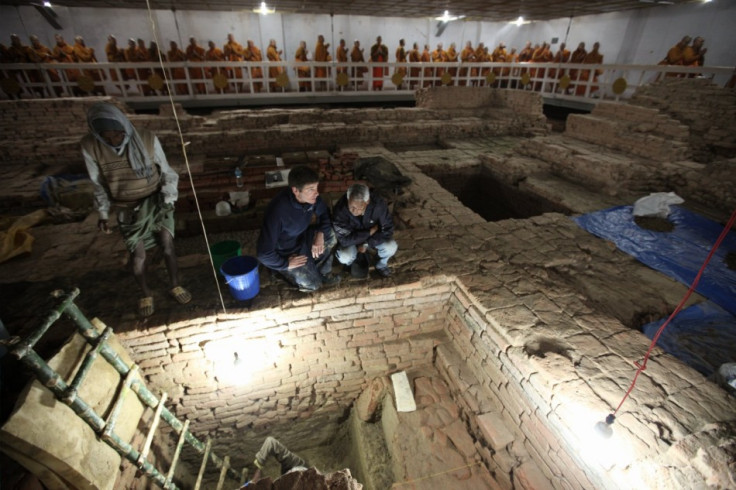Mystery of Buddha's Birth Enlightened by Nepal Archaeologists

Mysteries surrounding the birth of Buddha, the founder of Buddhism, have been uncovered by archaeologists in Nepal.
Researchers have come across the first archaeological material linking the birth of Buddha to a specific century - showing he was born in the sixth century BC.
Excavations in the Maya Devi Temple at Lumbini uncovered the remains of a previously unknown timber structure underneath a series of brick temples.
The timber structure was laid out in the same design as the brick above it and contained an open space in the centre that fitted in with the nativity story of Buddha.
In Buddhist tradition, stories tell how Queen Maya Devi, Buddha's mother, gave birth to him while holding the branch of a tree within the Lumbini Garden, somewhere in between the kingdoms of her husband and parents.
Robin Coningham, an archaeologist with Durham University, said the open space in the centre of the timber shrine may have accommodated the tree that Maya Devi held on to, and that brick temples were later built above the timber shrine around the central space, which remained unroofed.

Lumbini has long been associated with the birth of Buddha, but the century he was born was unknown. Until now, the oldest Buddhist structures at Lumbini dated no earlier than the third century BC.
Lumbini is one of four key sites associated with the life of Buddha. The others are Bodh Gaya, where he became an enlightened one - or Buddha; Sarnath was where he first preached; and Kusinagara where he died at the age of 80.
Buddha advised all his followers to visit Lumbini and the site was a popular place of pilgrimage up to around 500AD, when Chinese pilgrims recorded there being a shrine beside a tree.
Coningham said: "Very little is known about the life of the Buddha, except through textual sources and oral tradition. We thought 'why not go back to archaeology to try to answer some of the questions about his birth?' Now, for the first time, we have an archaeological sequence at Lumbini that shows a building there as early as the sixth century BC."
Archaeologists say the site contributes to the understanding of Buddhism as well as the importance of Lumbini as a pilgrimage site.
Published in the journal Antiquity, the researchers show how they dated the timber shrine with fragments of charcoal and grains of sand through radiocarbon and optically stimulated luminescence techniques. Geoarchaeological researchers also confirmed the presence of ancient tree roots.
The discovery also sheds light on the emergence of Buddhism, which is now practiced by hundreds of millions of people.
"The sequence (of archaeological remains) at Lumbini is a microcosm for the development of Buddhism from a localised cult to a global religion," the authors wrote. Ancient Lumbini was rediscovered in 1896 after becoming lost and overgrown in the jungles of Nepal in the middle ages.
Ram Kumar Shrestha, Nepal's minister of culture, tourism and civil aviation, said: "These discoveries are very important to better understand the birthplace of the Buddha. The government of Nepal will spare no effort to preserve this significant site."
© Copyright IBTimes 2024. All rights reserved.






